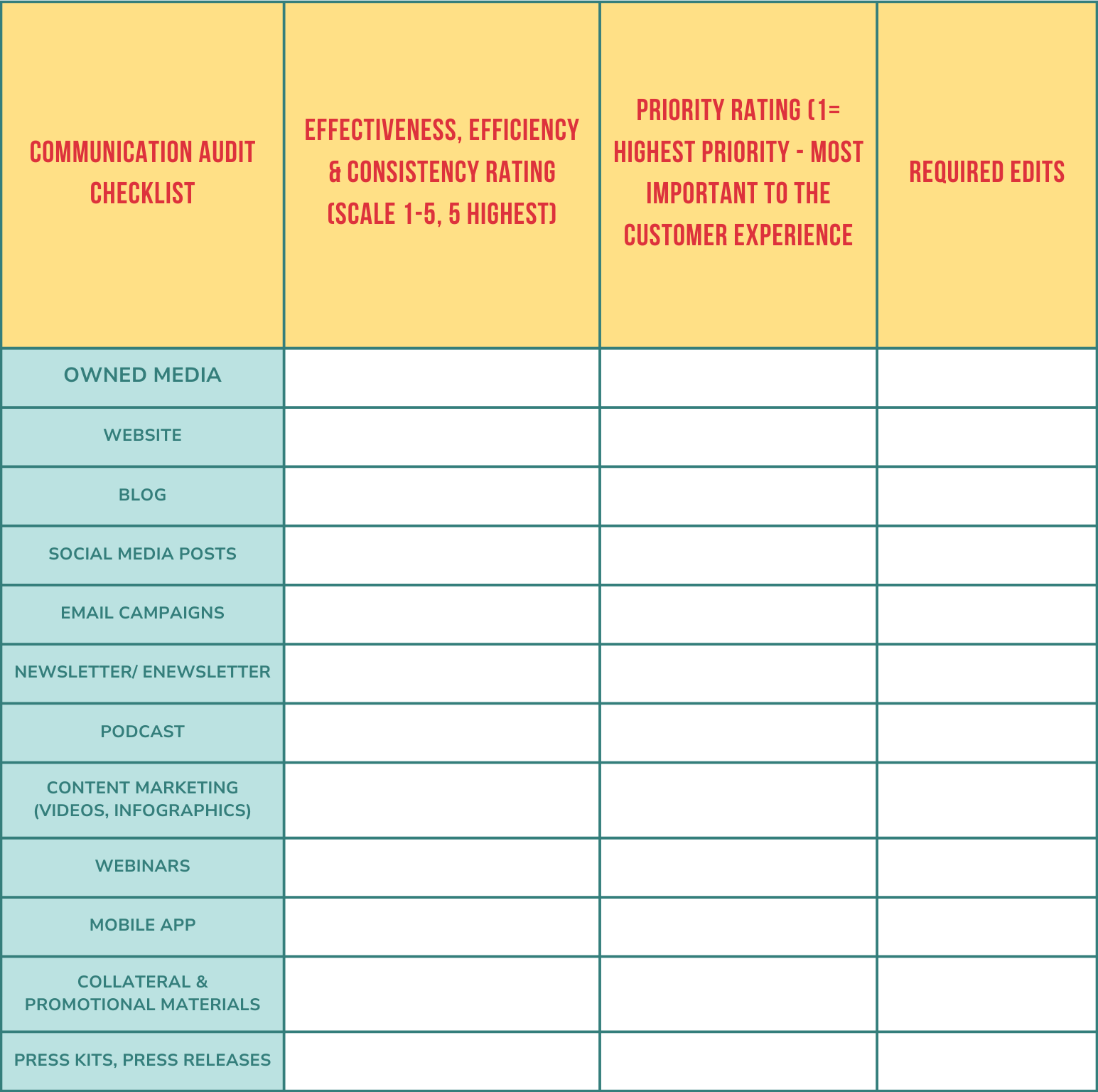At the beginning of each new project, we start with a communication audit. A communication audit assesses the effectiveness of internal and external communications by looking at a nonprofit’s owned, earned, and paid media.
The objective of a communications audit is to evaluate the effectiveness, efficiency, and consistency of an organization’s communication efforts and to identify opportunities for improvement.
But first, it is essential to gain an understanding of your target audiences. While owned media may target a range of audiences, paid media will be much more targeted. That is why it is important to develop target audience profiles. Click here to learn how to Create a Persona Profile.
Once you are clear as to your key target audiences, marketing communication materials need to be collected and reviewed for the last year or two. Depending on the effort, internal communications may also need to be collected as well as external communications.
Owned Media
- Website
- Blog
- Social Media Posts
- Newsletter/eNewsletter
- Email Campaigns
- Podcast
- Content Marketing (Videos, Infographics)
- Webinars
- Mobile App
- Collateral & Promotional Materials
- Press Kits, Press Releases
Earned Media
- Social media shares, retweets, comments
- PSA Campaign
- Online reviews
- PR, news stories
- Word of mouth (WOM)
Paid Media
- Advertising
- TV
- Radio
- Outdoor
- Digital – Google ads, ad banners, etc.
- Social
- Direct Mail
- Advertorial
Next is the analysis. This can be done on an inventory spreadsheet like the chart below with a different line for each element. WW reviews each element and rates it on a scale of 1-5 for Effectiveness, Efficiency, and Consistency.
Effectiveness means that the communication materials are targeted to a specific audience with a single key message and a highly visible call to action (CTA) that motivates the audience to take action. Efficiency means that the communications are focused, streamlined, and contributing to your goals via specific measurements such as web visits, downloads, views, etc. Consistency means that each element works as a unit as a part of the whole brand in terms of brand identity, voice, and messaging.
Next is the priority rating. The priority rating is important as it aids the marketing team with a priority list of what elements and revisions to tackle first. For most nonprofits, the website is the top priority, so those edits should be prioritized first. Then, there is a space for recommended edits to make to each element.

Once the communication audit is complete, we move to solicit stakeholder input. Our findings are presented and reviewed in a workshop where clients provide input to hone the suggested edits and revisions. Preferably when the budget allows, we also solicit input from the end user which gives even more targeted feedback. This can be completed via online surveys, user testing, interviews, or focus groups. Williams Whittle covered the various ways to collect data for a marketing audit in a previous blog here. And a recap of how nonprofits can benefit from research can be found here.
The final collected feedback is then pulled together in a communications SWOT analysis.
- Strengths: What communication elements work the best?
- Weaknesses: What elements are not working and need to be updated or eliminated?
- Opportunities: What elements can be built out further or to communicate better?
- Threats: Are there internal or external factors that may impact existing communications?
The SWOT analysis becomes the basis of the plan of action to help you enhance your marketing communications and get back on track to serving your mission.
Next up on the Williams Whittle blog is how to develop a competitive communications audit and a brand audit. Contact us to get started.



